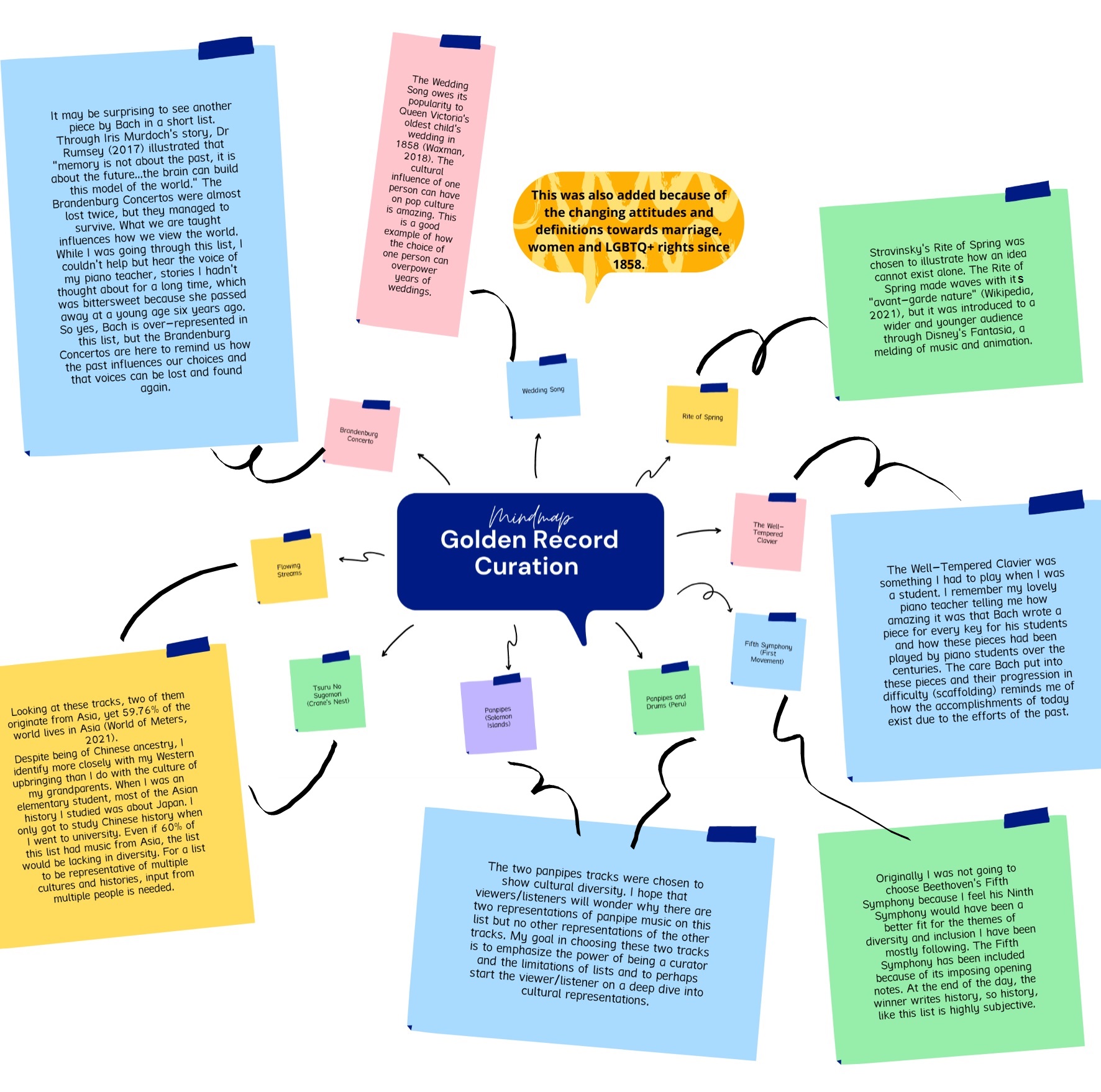 When I completed the quiz, I thought I’d chosen the tracks in the mind map, so imagine my surprise when I checked the Palladio file and saw four tracks I didn’t remember choosing: Izlel je Delyo Hagdutin, Melancholy Blues, Kinds of Flowers and Tchakrulo. The only explanation I can think of is sometimes my connection freezes and when it does, the page loads incorrectly so it is partially not aligned. When I complete assignment 9, I will use the data that was inputted, but for this activity, I’m posting what I thought I put into the quiz.
When I completed the quiz, I thought I’d chosen the tracks in the mind map, so imagine my surprise when I checked the Palladio file and saw four tracks I didn’t remember choosing: Izlel je Delyo Hagdutin, Melancholy Blues, Kinds of Flowers and Tchakrulo. The only explanation I can think of is sometimes my connection freezes and when it does, the page loads incorrectly so it is partially not aligned. When I complete assignment 9, I will use the data that was inputted, but for this activity, I’m posting what I thought I put into the quiz.
This activity was interesting because this course has primarily dealt with the visual aspect of communicating. Because I think this world is becoming more visual, I couldn’t help but wonder how many viewers would listen to each of these tracks and if they did, how much would they listen? Another thought that came to mind was, what if species from another planet were browsing Earth’s Internet to learn more about us, but they do not have sensors to translate these vibrations and sounds into something meaningful? As Dr Rumsey (2017) noted, written notes need to be included in archives, they can’t be left to be misread. Even without considering extra-terrestrial beings, the digitization of records does not result in absolute accessibility. Just as the proprietary nature that hardware and software are developed can lead to technology becoming obsolete (Smith, 1999), perhaps this record will go the way of Geocities. However, as Dr Rumsey (2017) said, the impossibility of preserving everything does not mean we should not even try. I initially set out to choose tracks that I felt were inclusive and representative of the world’s diversity, but at the end of the activity I found the pieces I chose were personal. While I was researching the different pieces, my prior knowledge and memories influenced my choices. Dr Rumsey (2017) said that in scientific thought, the past is a tool for predicting the future. Knowledge that is handed down from teacher to students and then to the students’ students is the future being created, so while my choices are personal, it is formed from the knowledge handed down by my own teacher and the teachers who taught my teacher.
*To enlarge the mind map: 1. right-click on the image 2. open the image in another tab 3. left-click on the image to zoom in

References
Asia population (2021, October 27). World of Meters. https://www.worldometers.info/world-population/asia-population/
Brown University. (2017, July 11). Abby Smith Rumsey: “Digital Memory: What Can We Afford to Lose?” [Video]. YouTube. https://www.youtube.com/watch?v=FBrahqg9ZMc
Smith, A. (1999). Why digitize? Retrieved June 15, 2019, from Council on Library and Information Resources website: https://www.clir.org/pubs/reports/pub80-smith/pub80-2/
The rite of spring. (2021, October 19). In Wikipedia. https://en.wikipedia.org/wiki/The_Rite_of_Spring#cite_ref-2
Waxman, O.B. (2018, January 25). How ‘here comes the bride’ became the song you hear at every wedding ceremony. Time. https://time.com/5115834/wedding-march-here-comes-the-bride/